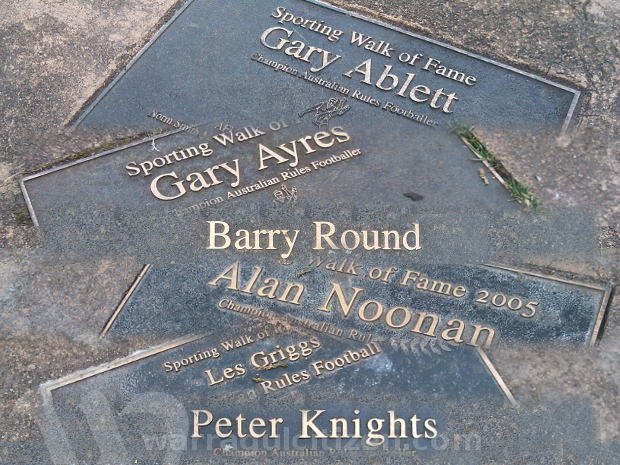
WHILE we are yet to see if Hawthorn players dominate the MCG this afternoon we know the team has already topped one ladder: Baw Baw’s Sporting Walk of Fame.
The Walk of Fame celebrates local sportspeople who made an impact during their careers through a series of plaques in Warragul’s Civic Path. Thirteen people have been inducted, six of whom are former AFL players.
ADVERTISEMENT
Half of those players played for Hawthorn at one point in their career – Gary Ablett, Gary Ayres and Peter Knights.
Bloods/Swans player Barry Round and Essendon’s Alan Noonan (who also played for Richmond) and Les Griggs make up the rest of the list.
This is a brief history of those AFL inductees.
ADVERTISEMENT
Gary Ablett

One of the greatest AFL players in history, Gary Ablett was born in Warragul in 1961 and grew up in Drouin where he attended Drouin State School and Drouin High School.
Having played cricket, tennis, soccer and football with his brothers from a young age, Ablett joined the Drouin Under 12 AFL team at the age of 10. The following year he won the club’s Best and Fairest.
Ablett’s time with the club didn’t end when he left to play for Hawthorn in 1979 – after playing six games with the Hawks he returned to West Gippsland to play in Drouin’s premiership team. He returned to Hawthorn for another six games in 1982.
He would go on to play 242 games with Geelong, being part of four Grand Finals and kicking 1,021 goals in blue and white.
A celebrated footballer, Ablett also played in State of Origin games and captained the All-Australian team in 1995.
Ablett was among the first to be inducted into the Walk of Fame in 2000. In 2005 he was inducted into the AFL Hall of Fame.
ADVERTISEMENT
Gary Ayres
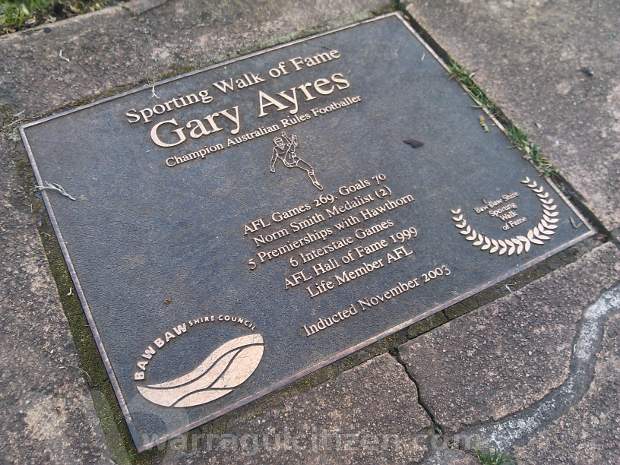
When Gary Ayres won the Most Promising Player award in the Latrobe Valley League in 1977 the judges got something right – the then-Warragul player would go on to kick 70 goals from 269 games for Hawthorn and was awarded the Australian Sports Medal in 2000.
Ayres grew up in Drouin, playing for the town’s Under 12s before moving to the Warragul Under 15s. He played his first senior game for Warragul at the age of 16.
His commitment to the Warragul team was strong: when Hawthorn approached the local star to play in 1977 he decided not to abandon his team mid-season. In 1978 he became a Hawthorn forward.
The decorated player was part of five Hawthorn premiership teams in the 1980s and early 1990s, coached Geelong’s Grand Final team in 1995 and the Crows in 2000.
Ayres was inducted into the AFL Hall of Fame in 1999 and was included in the Walk of Fame in 2003. He is currently senior coach of the Port Melbourne VFL club.
Les Griggs
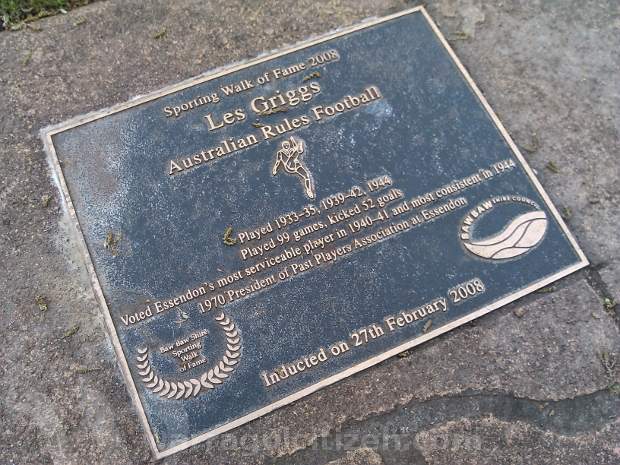
Les Griggs made his name as a strong player while at school in Yarragon and Warragul.
Griggs kicked 52 goals in a career of 99 games for Essendon, first joining the team in 1933 before leaving for a stint as a teacher and coaching teams around the state. He returned to the club in 1939.
Twenty years of coaching country football followed, leading Kenmare, Jeparit, Kerang, Bairnsdale and thrice Mildura to premierships.
Griggs was Essendon vice president from 1971 to 1976.
Peter Knights
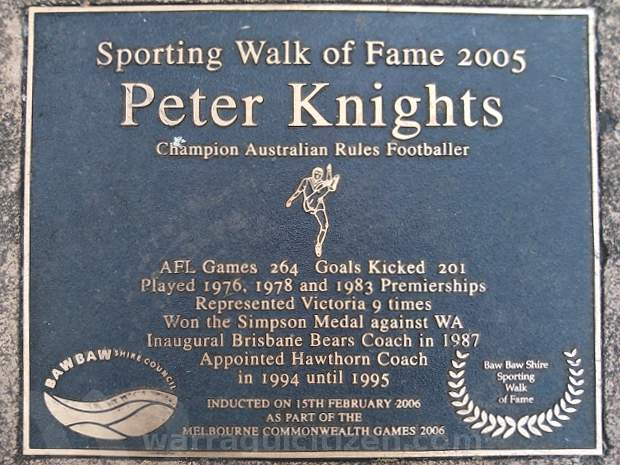
Peter Knights grew up in Longwarry, beginning his football career in 1965 with the Drouin Under 14s before playing for Hawthorn at a young age.
Joining the Hawks in 1969 at the age of 16, Knights had to juggle school with his football career. His parents came to the rescue, driving him to and from Melbourne on weekends to play while he continued to attend Drouin High. He traveled by taxi straight from school for training on Tuesdays and Thursdays.
During his career Knights kicked 202 goals from 267 games, but missed the 1971 grand final due to injuries.
He also narrowly missed a Brownlow in 1976 by three votes having not played seven games that season due to a broken collarbone.
A player in three premiership teams, Knights was inducted into the Hawthorn Hall of Fame in 2003 and into the Walk of Fame in 2006.
Alan Noonan
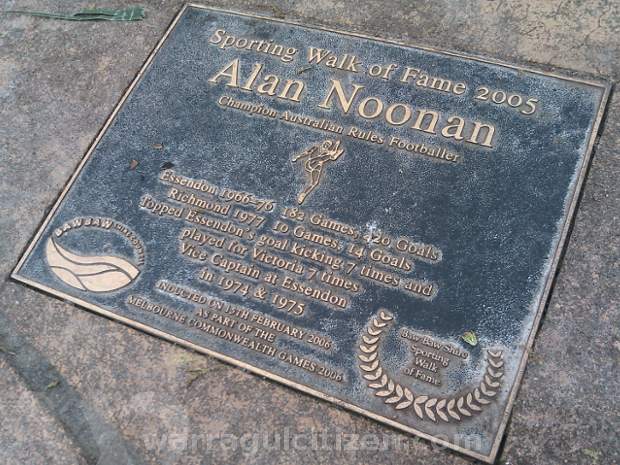
Allan Noonan was born in Warragul in 1947 and was captain of Warragul Primary School’s football team by grade five.
Noonan joined the Warragul senior team at 15 years before playing for Essendon in 1966 where he became recruit of the year.
He was determined to join Essendon after coach and player John Coleman visited his house. Noonan would go on to kick 420 goals from 182 games for the team.
He also played 10 games for Richmond in 1977, kicking 14 goals.
Noonan later played at Coburg and Keilor but remains in Essendon’s top ten goal kickers list to this day.
Barry Round
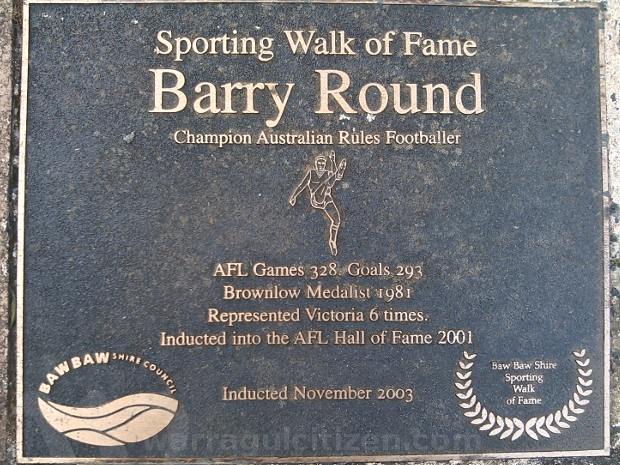
South Melbourne/Sydney Swans player Barry Round began his career in the early 1960s with the Nilma-Lillico football club.
After also playing in Nilma Primary School’s team, Round moved to Warragul FC where he kicked 50 goals from 33 games.
Footscray recruited the stand-out player in 1969, selecting him in the first game of that season.
Like Peter Knights and other regional players, Round was supported by his family as he made the transition to playing for Melbourne teams; his father transferred to Footscray with work when Round was signed.
Round played for South Melbourne in 1976 where by 1980 he would become captain. He remained captain when the team moved to Sydney in 1982.
He was inducted into the AFL Hall of Fame in 2001 and the Walk of Fame in 2003.
Most information for this article was sourced from the Baw Baw Shire Sporting Walk of Fame guide, available at the Warragul library. Other information has come from club and AFL history websites.





I did the interviews and wrote all the articles about our sporting heroes in the Sporting Walk of Fame book.